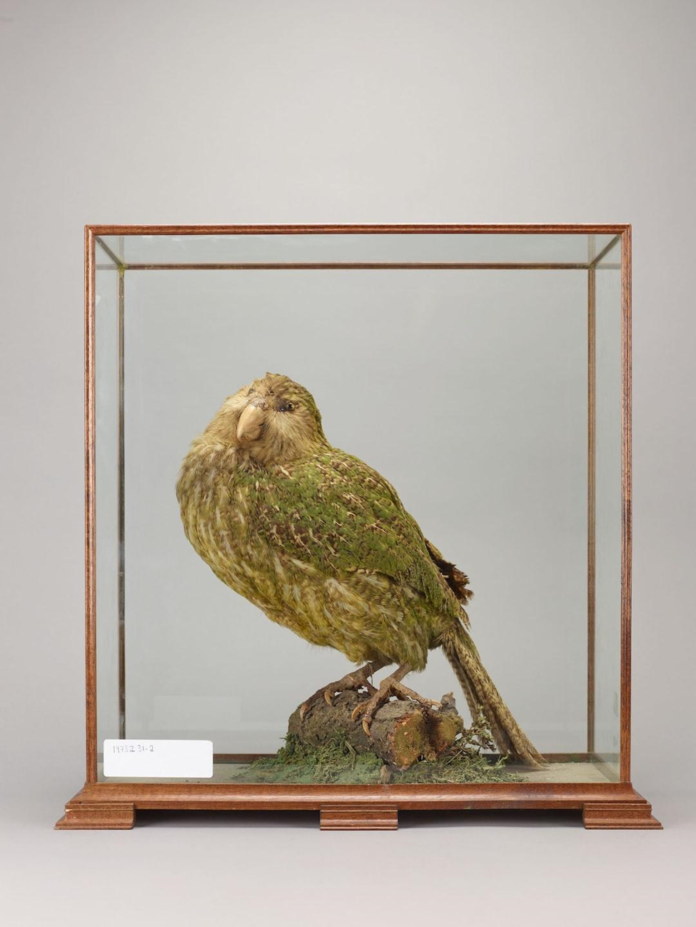Taxidermy may seem like a mysterious and complex craft. Yet, with the right guidance and a curious spirit, anyone can embark on this unique journey. If you’re fascinated by nature’s beauty or seeking to preserve memories, this is for you.
Learning how to create your first mount can be an immensely rewarding experience. This blog is your gateway to the world of taxidermy. This will offer step-by-step guidance for beginners on “How to taxidermy.”
So, read on.
Understanding Taxidermy
So, what is taxidermy? Before delving into the hands-on process, let’s understand the fundamentals of taxidermy. Taxidermy is the art of preserving and mounting animals. It is done to recreate lifelike appearances.
This art form has various types. This can include skin mounting and soft mount taxidermy. Each type requires specific techniques and materials.
Skin mounting involves preserving the animal’s skin and attaching it to a mannequin. Soft mount taxidermy utilizes flexible materials for a more natural appearance.
Gathering Your Tools and Materials
Just like any craft, taxidermy requires the right tools and materials. As a beginner, it’s important to have a clear list of what you’ll need. Basic tools include scalpels, forceps, needles, and wire.
Materials such as tanning solutions, mannequins, and glass eyes are also essential. Research reputable taxidermy suppliers. This is to ensure you’re using high-quality materials that yield the best results.
Choosing Your First Project
Choosing the right animal for your first taxidermy project is an exciting and crucial decision. It’s tempting to dive into more complex specimens. But, it’s wise to start with something manageable and build your skills gradually.
Here’s how to make an informed choice for your first taxidermy project.
Consider Size and Complexity
Opt for a small to medium-sized animal for your first project. This allows you to focus on the details without becoming overwhelmed. Animals like birds, squirrels, or rabbits are excellent choices for beginners.
As you become more skilled, you can progress to larger animals.
Availability of Resources
Before embarking on your journey, ensure you have access to the necessary resources. Research where you can obtain the animal legally and ethically. Some animals are protected by laws and regulations, so it’s essential to source them responsibly.
Local Wildlife
Choosing a local animal species offers several advantages. You’ll have a better understanding of their anatomy, behavior, and habitat. Studying local wildlife can provide valuable insights into their physical characteristics, making the preservation process more accurate.
Understanding the Anatomy
Select an animal with relatively simple anatomy for your first project. Animals with fewer intricate features will be easier to work with as you learn the techniques. This choice allows you to focus on mastering the basics of skinning, mounting, and detailing.
Personal Interest and Connection
Choosing an animal you have a personal interest in or a connection with can enhance your motivation and dedication. If you have a favorite animal or a memorable encounter with a particular species, it could be an excellent choice for your first project.
Guidance and Support
If possible, seek guidance from experienced taxidermists or join online communities dedicated to taxidermy. These resources can provide advice, tips, and troubleshooting assistance. Choosing a project that aligns with the expertise available to you ensures you have the necessary support as you learn.
Taking Your Time
Remember, your first taxidermy project is a learning experience. It’s perfectly normal to encounter challenges and make mistakes along the way. By choosing a manageable project and taking your time to complete each step carefully, you’ll set yourself up for success.
Step-by-Step Process
Creating your own taxidermy mount requires a systematic approach and attention to detail. Let’s delve into the step-by-step process that will guide you through this fascinating journey of bringing an animal’s lifelike appearance back to life.
Skin Preparation
Carefully remove the skin from the animal’s body. This delicate process requires precision to avoid damaging the skin. Begin by making an incision along the animal’s belly or back.
Gently peel the skin away from the body, using a scalpel or sharp knife. Take your time and work slowly to ensure the skin remains intact.
Fleshing and Cleaning
Once the skin is removed, the next step is fleshing. This involves removing any residual tissue or fat from the skin. Special fleshing tools can help you achieve this. Proper fleshing ensures that the skin is clean and ready for preservation.
Cleaning the skin is equally important. Use warm water and mild soap to gently clean the skin. This helps remove any dirt, blood, or other impurities. Rinse the skin thoroughly and pat it dry with a clean towel.
Creating the Mannequin
The mannequin is the foundation upon which the preserved skin will be mounted. You can create a mannequin using various materials, such as foam, wood, or clay. Begin by carving or shaping the material to match the animal’s body shape and proportions.
This step requires careful consideration to ensure that the mannequin provides the necessary support for the skin.
Mounting the Skin
Gently stretch the preserved skin over the mannequin. Start with the head and work your way down to the body. Use pins or staples to hold the skin in place temporarily. This allows you to adjust the positioning and ensure a snug fit.
Next, use a combination of stitching and wiring techniques to secure the skin to the mannequin. Use a curved needle and strong thread to sew the edges of the skin together. This creates a seamless appearance.
Additionally, use wire to provide extra support and stability, especially for areas like legs and tails.
Detailing and Finishing Touches
Detailing is where your taxidermy mount truly comes to life. Add glass eyes that match the animal’s natural appearance. Position them carefully to convey a lifelike gaze. If the animal has feathers or fur, use grooming tools to arrange them in a natural pattern. This step requires patience and a keen eye for detail.
Sculpt any missing features using modeling clay. Whether it’s a nose, ears, or claws, recreating these features enhances the mount’s realism. Take your time to ensure that each detail aligns with the animal’s anatomy.
Preserving the Mount
Once your taxidermy mount is complete, it’s essential to preserve it for the long term. Apply a protective solution to the skin to prevent decay and insect infestations.
Tanning solutions or chemicals designed for taxidermy can help achieve this. Follow the manufacturer’s instructions carefully to ensure proper preservation.
With your taxidermy project complete, it’s time to proudly display your creation. Choose a location that showcases the animal’s natural habitat.
A wall mount is a popular choice, allowing you to appreciate your work as a piece of art. Make sure the mount is securely attached and properly framed if necessary.
Reflection and Improvement
Creating a taxidermy mount is a skill that requires practice and dedication. After completing your first project, take a moment to reflect on your journey. You can look into these taxidermy photos to get more inspiration.
Consider what you’ve learned and areas where you can improve. Every mount you create will enhance your abilities and bring you closer to mastering this unique art form.
The Significance of Taxidermy
Taxidermy holds a significant place in both the artistic and scientific communities. Beyond its visual appeal, taxidermy serves various purposes that contribute to our understanding and appreciation of the natural world.
Preservation of Animal Specimens
One of the most significant aspects of taxidermy is its role in preserving animal specimens. Taxidermists carefully prepare and mount animals, creating lifelike representations that capture their essence. These specimens allow scientists, researchers, and educators to study and learn about various species’ anatomy, behavior, and characteristics.
By preserving animals in a lifelike state, taxidermy aids in building a comprehensive understanding of the biodiversity on our planet.
Contribution to Science and Research
Taxidermy specimens have contributed significantly to scientific research. By studying preserved animals, researchers can gain insights into evolution, species distribution, and ecological relationships. These specimens provide a valuable resource for documenting changes in populations and habitats over time.
Additionally, taxidermy helps scientists illustrate their findings and share their discoveries with the public.
Artistic Expression and Aesthetics
Beyond its scientific applications, taxidermy is an art form that celebrates the beauty and diversity of nature. Skilled taxidermists use their creativity to transform animal hides into lifelike and visually appealing displays. These artful creations showcase the intricate details of animals’ fur, feathers, and features, allowing viewers to marvel at the wonders of the natural world.
Preserving Memories and Moments
Taxidermy also has personal significance for individuals. Hunters and outdoor enthusiasts often choose taxidermy to preserve the memory of a successful hunt or a meaningful encounter with wildlife. These mounts become cherished mementos that evoke memories and emotions associated with those experiences.
Contribution to Conservation Awareness
Taxidermy can also contribute to conservation efforts by raising awareness about endangered species and the importance of protecting wildlife habitats. Skillfully crafted taxidermy displays can capture the beauty and vulnerability of rare and threatened species, inspiring viewers to take action to safeguard these creatures and their ecosystems.
Learning How to Taxidermy
Now, we know how to taxidermy. As you close this guide, you’re equipped with the knowledge and inspiration to embark on your taxidermy journey.
Remember that practice and patience are key to mastering this intricate art form. Your first taxidermy mount may not be perfect, but each attempt brings you closer to capturing the essence of the animals you admire.
With dedication and a touch of creativity, you can create stunning pieces that pay homage to the beauty of the animal kingdom. If you think this article is helpful, check out our other blogs!











